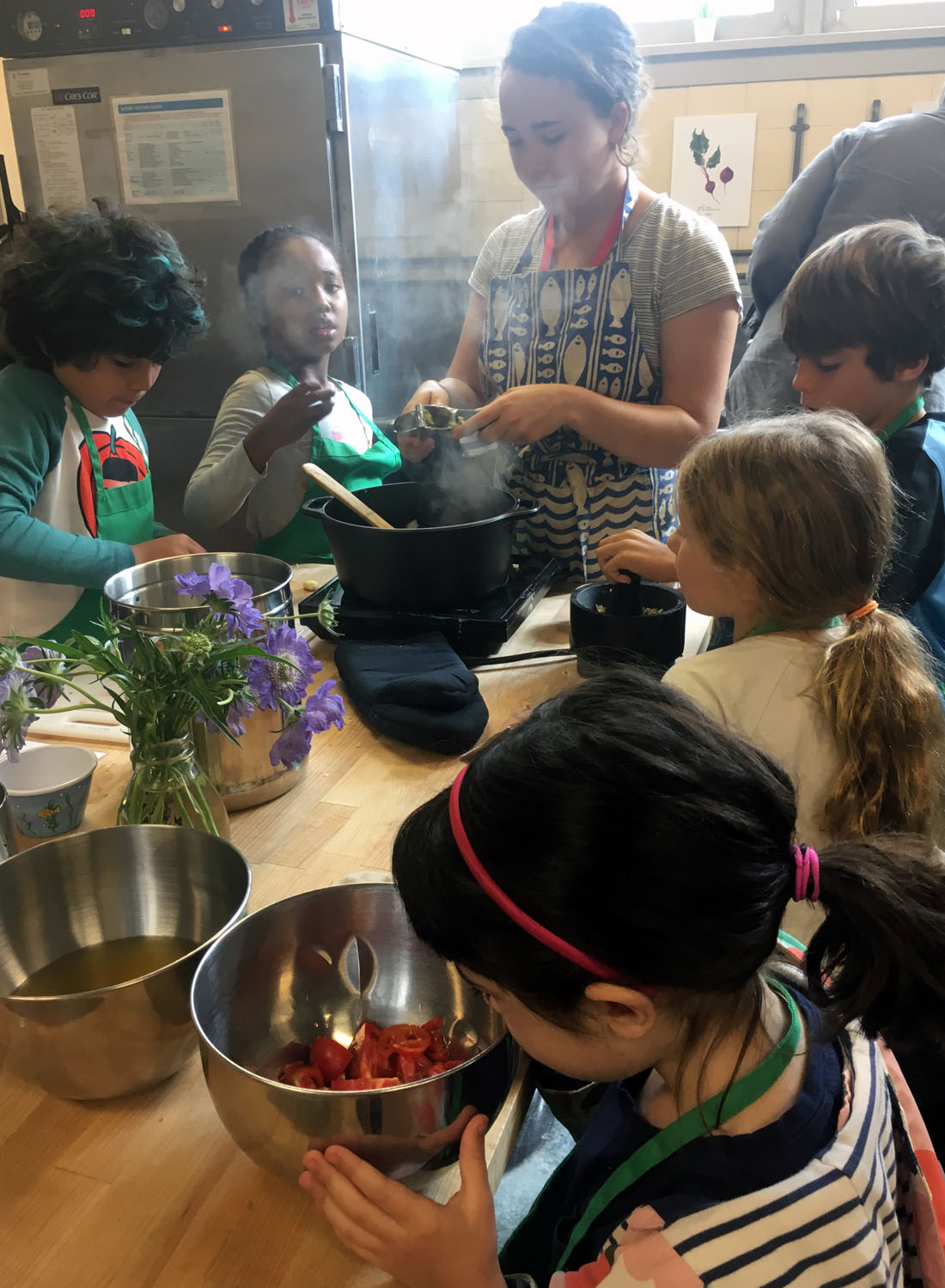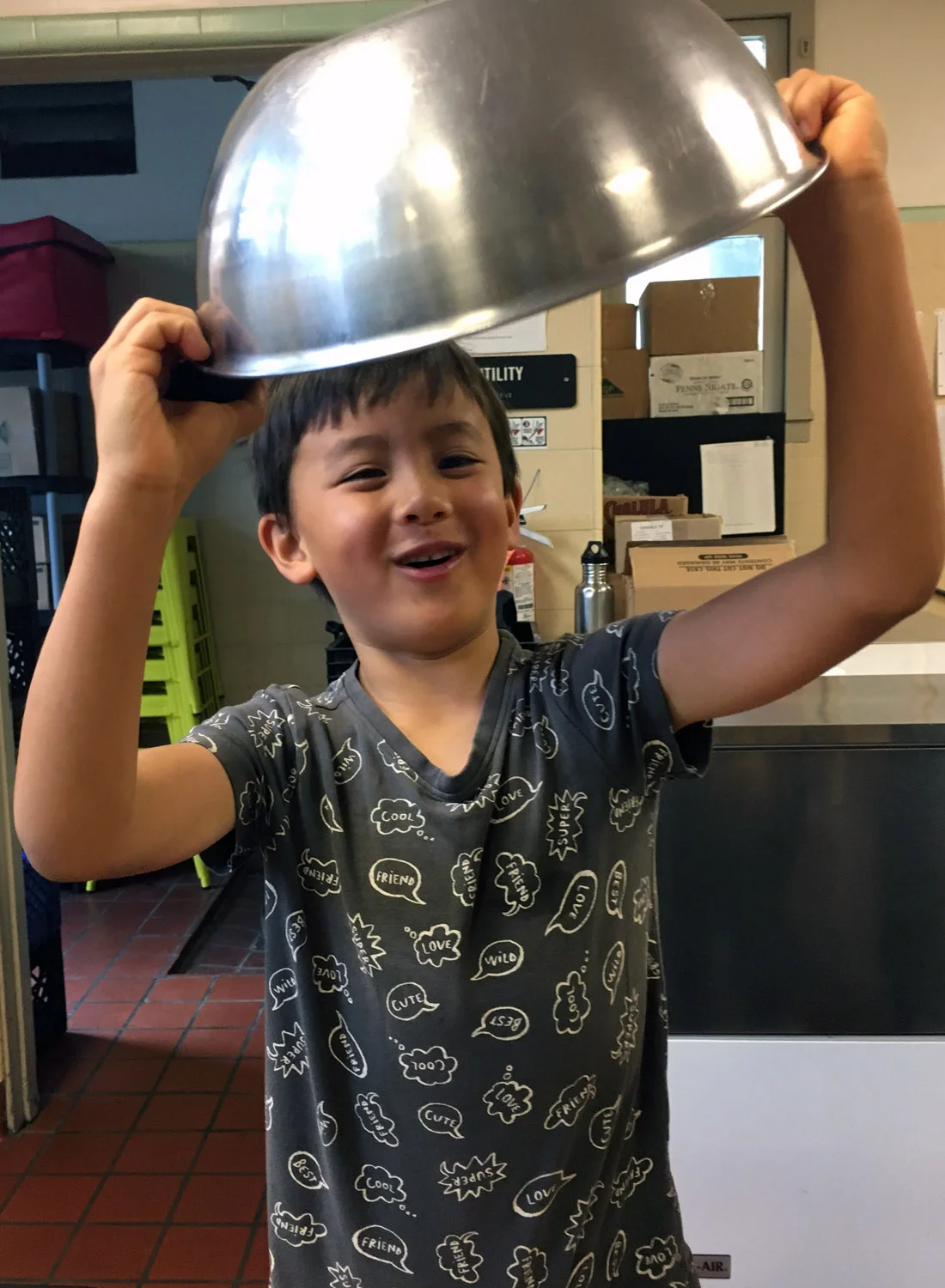This week for our penultimate class, our third-grade chefs learned to make temaki, Japanese hand rolls. Students watched two videos before heading to the kitchen. One explained the fascinating history of sushi. Another featured a Japanese chef demonstrating the proper technique to make a hand roll.
In the kitchen, the kids worked on julienning, a French technique that results in long, thin strips. They have nearly perfected this now. Once the prep was complete, we each cut a sheet of seaweed in half and dipped our fingers in water before working with the sticky sushi rice. After placing a base of rice on the left side of our sheet of nori, we had a choice of seasonings like furikake and/or gomasio and fillings like carrot, cucumber, pickled ginger, green onion, tofu, pickled daikon, shiso, and sunflower sprouts.
Then it was time to roll! First we folded up from the bottom left corner to make a triangle, then we continued rolling until a cone was formed. The final step was to “glue” the last flap of seaweed down with a single grain of rice.
















































































































































































































































